• Employability skills & Career advice
• Authentic tasks
• Culture & Civic Education
• INVALSI
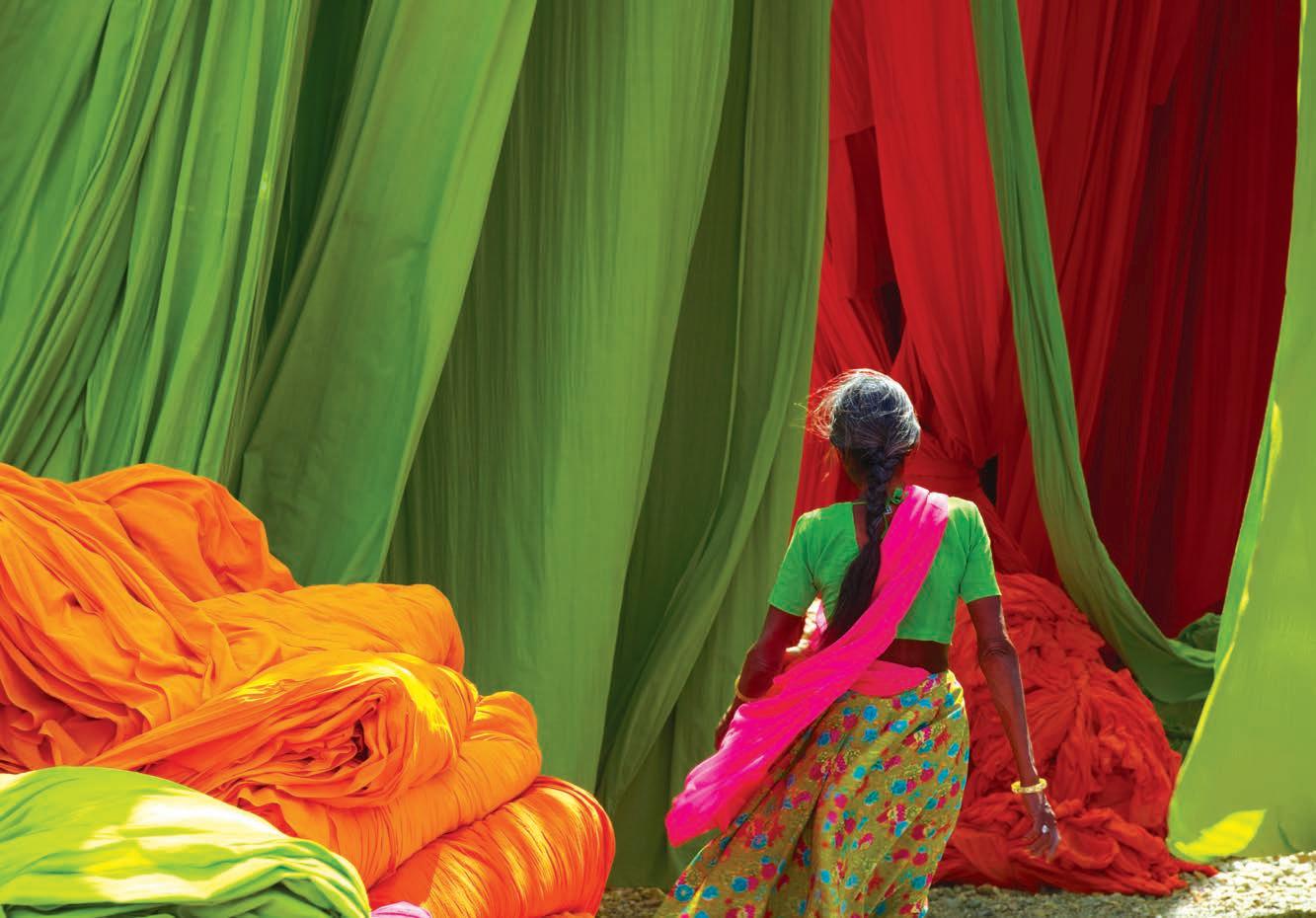
& TOURISM
Alison Smith
TRAVEL
EXPLORE PREMIUM
ESP ENGLISH for SPECIFIC PURPOSES Il piacere di apprendere
LIBRO DIGITALE INTERATTIVO - Versione studente
Il Libro digitale, sfogliabile e interattivo, contiene:
• esercizi interattivi, con correzione immediata
• audio, video e mappe esplorabili


• libro liquido: versione accessibile ad alta leggibilità che consente di modificare il tipo di carattere e la sua dimensione, l’interlinea e il colore dello sfondo della pagina.

Scaricare il Libro digitale è molto semplice. Vai alla pagina www.gruppoeli.it/libridigitali segui le indicazioni e inserisci il codice (disponibile da settembre):
Inquadra il QR code per accedere al video tutorial
Guarda e ascolta sullo smartphone o sul tablet tutti i contenuti multimediali del tuo libro con la App


Scarica la App da App Store per iOS e su Google Play per Android.
Inquadra il QR code per accedere al video tutorial
Accedi ai contenuti e scaricali.
Inquadra la pagina del tuo libro.
AUDIO VIDEO
ESERCIZI con il tablet
Smith
EXPLORE PREMIUM
TRAVEL & TOURISM
‘Do not follow where the path may lead. Go instead where there is no path and leave a trail.’
Ralph Waldo Emerson
Alison
Il piacere di apprendere
ESP ENGLISH for SPECIFIC PURPOSES
SECTION A
The world of Tourism
p. 8
VIDEO
UNITS THEORY
1 The Tourism Industry
p. 10
2 marketing and promotion
p. 46
3 working in tourism
p. 74
• The nature of tourism
• A short history of tourism
• The world tourist industry today
• The economic impact of tourism
• The social and environmental impact of tourism
- ‘The Transformation of Maya Beach’
• The role of marketing
• Market segmentation
• The marketing mix
• SWOT analysis
SECTION B Destinations and services
p. 106
VIDEO
• Choosing a job
• Working as a guide
• Working in a Tourist Information Centre
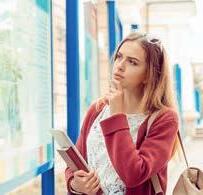
• Working in a travel agency
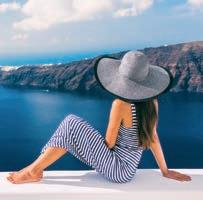
• Working in a hotel
• Working in a resort
• Working for an airline
• Working for a cruise company
CASE STUDY: Promoting a web business p. 104
4 motivations and destinations
p. 108
5 transport p. 144
Why people travel
• Business tourism
• Mass tourism vs niche tourism
• Nature and rural tourism
• Adventure tourism

• Weddings and honeymoons
• Food tourism
• Medical and wellness tourism

• Music and screen tourism
• Religious tourism
• Before you travel
- Identity documents
- Insurance
- Health
- Money
Air transport
• Airlines and flights
• Flight classes
• Tickets
• The airport
• International departure and arrival procedures

6 accommodation p. 184
• Choosing accommodation
Serviced accommodation
• Hotels
• Facilities and amenities

• Technology in hotels
- ‘Smart Technology’
• B&Bs and guest houses
• Accommodation ratings
CASE STUDY: Helping a hotel in difficulty p. 228
• Organisations for the promotion of tourism
• Organisations for selling tourism products
• The effect of ICT and the Internet on the tourism industry
• Package holidays
• Life cycle of tourist destinations
• Market research
• Analysing data
• Promotional methods
• Digital promotion
- ‘Marketing on TikTok’
• Working in marketing
• Working as an event planner
• Working as a travel photographer or writer
• The future of tourism jobs:
- ‘The World Hotel Industry’s Ongoing Recovery’
Where people travel
• Natural resources
• Man-made resources
• Climate
• ‘Tourism Trends in the 2020s’
Land transport
• Travelling by train
• Travelling by coach and bus
• Travelling by car
Water transport
• Ferries and water buses
• Private hire
• Cruises
• On board a cruise ship
Self-catering accommodation
• Holiday rentals
• Youth hostels and residences
• Camping and glamping
2
contents
PRACTICE
• Written communication in tourism:
- Emails
- Formal letters
- Faxes and electronic faxes
- Forms
• Oral communication in tourism:
- Telephone calls
GRAMMAR Indirect questions
- Voicemail
- Face-to-face communication
• Visual communication in tourism
EXPLORE LANGUAGE
• Travelling and travellers
• The words journey, travel, trip and tour
TEST YOUR COMPETENCES CITIZENSHIP
• ‘Are Tourists Still Doing the Grand Tour?’
VIDEO ROLE PLAY In a tourist information office
• Adverts VIDEO
• Leaflets and brochures
GRAMMAR Modifiers and order of adjectives
• Websites
• Looking for a job
• Writing a CV
- Example of a CV
- Europass CV
- Writing a personal profile
• Circular letters and newsletters
• Promotional phone calls
• Promotion at a fair VIDEO
• Marketing and advertising
• ‘I came, I saw, I influenced’
VIDEO ROLE PLAY At a trade fair
GRAMMAR Past simple and Present perfect
- Other forms of CV VIDEO
• Writing a covering letter
• Preparing for an interview VIDEO
• Applying for a job
• ‘The Gig Economy and Tourism’
VIDEO ROLE PLAY A job interview
• The 2030 Agenda
• Sustainable tourism
• The digital world
• Smartphones rules
• What are human rigts?
• Migrants’ rights
- Why do people migrate?
- Migration data
• Women’s rights
• Gender equality
• Presenting a destination
• Writing descriptive texts for a destination
GRAMMAR The definite article with place names
• Presenting a transport company
GRAMMAR Relative clauses
• Enquiries and replies
GRAMMAR Prepositions of time
• Bookings and confirmations
- Booking methods
- Booking a flight online
- Bookings and confirmations by email
- Bookings and confirmations on the phone and in person
• Presenting accommodation
• Writing descriptive texts for accommodation
GRAMMAR The passive
• Enquiries and replies
• Bookings and confirmations
GRAMMAR The infinitive
• Enquiries and replies
- Written enquiries and replies
- Phone enquiries and replies
• Giving advice
GRAMMAR The verbs suggest and recommend
• Changes and cancellations
• While travelling
- Check-in at the airport
- On board the plane
- At the station
• Complaints and replies
• Natural resources
• Man-made resources
• ‘Workcations’
VIDEO ROLE PLAY At a hotel
• UNESCO World Heritage Sites
- The list
- The danger list
- The biggest threat
- The intangible list
• Climate action
- ‘Melting Snow, Glaciers and Ice Caps’
• Modifications and cancellations
• Check-in and check-out VIDEO
• During a stay
GRAMMAR Use of will
• Dealing with complaints
• Complaints and reviews on social media and travel websites
• Air transport
• Land transport
• Water transport
• Travelling
• ‘On Your Bike’
VIDEO ROLE PLAY
Purchasing a rail ticket
• Clean and affordable energy
- ‘Are E-scooters the Way Forward?’
• Sustainable cities and communities
- ‘European Green Capital Award’
• Hotels
• Holiday rentals
• Camping
• ‘The Importance of Customer Satisfaction and Guest Experience’
VIDEO ROLE PLAY
At a holiday resort
• Decent work and economic growth
- ‘Community Tourism’
• Responsible production and consumption
3
SECTION C
exploring countries
p. 230
VIDEO
UNITS
7 explore italy p. 232
HIGHLIGHTS
• Geography
• Political system
• A brief history of Italy
• Key moments in the 20th and 21st centuries
• SURVIVAL GUIDE FOR TOURISTS
8 explore the british isles p. 272
• Geography
• A brief history of the UK

• Key moments in the 20th and 21st centuries
• SURVIVAL GUIDE FOR TOURISTS
Around England
• The coast
• Village life
• City life
9 explore the usa p. 312
• Geography
• A brief history of the USA
Around Italy
• The coast
• Mountains
• Lakes
• Rome
• Industrial heritage
• National parks
• London
VIDEO The Shard
• TFL – Transport for London
Around Wales
• The capital
• The coast
• Action and adventure
• Key moments in the 20th and 21st centuries
• SURVIVAL GUIDE FOR TOURISTS
ESW
CLIL
• Cities of art - Venice - Milan - Florence - Lecce
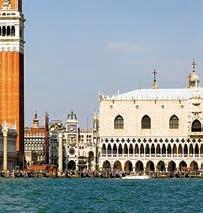
Around Scotland
• The capital
• Royal history
• Lochs
Around Ireland
• Belfast
• Dublin
• Abbeys and monasteries
• Prehistoric remains
Around the USA
• The coast
• National parks

• Washington DC
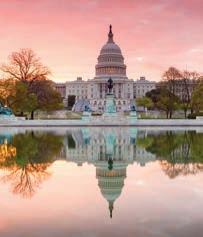
• Other major cities
- New York City
- San Francisco
VIDEO The Golden Gate Bridge
• Entertainment
canada p. 352
• A city break and safari in South Africa

• A rail and coach trip across the Canadian Rockies south africa p. 354
architecture p. 360
• Prehistoric architecture
• Greek architecture
- Greek temples
• Roman architecture

- Types of buildings
- Domestic architecture
• Roman heritage in Britain
- London
• Gothic architecture
- Gothic churches
• English Gothic cathedrals:
London’s
Westminster Abbey
• Norman
architecture in England
• Half-timbered houses in the UK
• Renaissance and Classicism
• Baroque
• Gothic revival and Neoclassicism
- Gothic revival
VIDEO Tower Bridge
- Bath
- Hadrian’s Wall
• Paleo-Christian architecture
• Romanesque architecture
• Renaissance
• Baroque
- The White Tower
VIDEO The Tower of London - Dover Castle - Windsor Castle
• Post-Impressionism

• Early Modernism
- Neoclassicism painting p. 378
• Romanticism
• Impressionism
• Pop Art INVALSI TRAINING p. 390
PCTO p. 400
4 contents
ITINERARIES CREATING YOUR ITINERARY PROFESSIONAL COMPETENCES

• Planning an itinerary – A practical guide
• Itinerary 1 – A walking tour in Rome
• Itinerary 2 – Day trips from Rome
GRAMMAR Quantifiers
• Itinerary 3 – A personalised fly-drive holiday in Sicily
• Itinerary 4 – An independent tour of central Italy
• Itinerary 1 – A coach tour in southern England
GRAMMAR The -ing form
• Itinerary 2 – A walking tour in London
• Itinerary 3 – A tour of Scottish islands
• Itinerary 4 – A themed tour in Wales
• Itinerary 5 – A coach tour in Ireland
• Guided itinerary
• More practice itineraries
• How to present a church
VIDEO The Basilica of St Francis of Assisi

- Churches/Cathedrals
• How to present a painting
VIDEO The Scrovegni Chapel, Padua - Paintings
TEST YOUR COMPETENCES CITIZENSHIP
• ‘Sensory Sightseeing in Sciacca’s Open-Air Museum’
VIDEO ROLE PLAY
Booking a holiday
• The European Union
- A brief history of the EU
- EU insitutions
• Issues facing the EU
• EU youth volunteer opportunities
• Guided itinerary
• More practice itineraries
• How to present a museum
VIDEO The British Museum, London
- Museums
• How to present a castle
VIDEO Bodiam Castle in the south of England - Castles
• Itinerary 1 – A tour of a New York borough
GRAMMAR First conditional
• Itinerary 2 – A fly-drive holiday on the East Coast
• Itinerary 3 – A river cruise on the Mississippi
• Itinerary 4 – Two package holidays in national parks
GRAMMAR Intensifying comparatives and superlatives
india p. 356
australia p. 358
sculpture p. 382
• Guided itinerary
• More practice itineraries
• How to present a national park
VIDEO Denali National Park, Alaska
- National parks
• How to present a theme park
VIDEO Universal Orlando Resort, Florida
- Amusement parks
• ‘Clovelly, a Village With a Difference’
VIDEO ROLE PLAY
At a tourist office in London
• ‘The Southern Charm of Charleston’
VIDEO ROLE PLAY
Booking a guided tour of New York
• The UK political system
- Parliament
- The Constitution
- Devolution
- The UK Government and Prime Minister
- Political parties
• The US political system
- The Constitution
- The US Government
• The United Nations
- Quick facts
- UN system
• A package tour to the Golden Triangle and Goa
VIDEO The Taj Mahal

• A multi-destination holiday in Australia

VIDEO The Sydney Opera House
• Romanesque
• Gothic
• Renaissance
• Baroque
• Neoclassicism
literature p. 384
TOURISM PHRASEOLOGY p. 402
• The beauty of nature: Sunset in Venice, George Byron
• The interior experience: To The Lighthouse, Virginia Woolf
• The American ‘way’: On the Road, Jack Kerouac
VIDEO Jack Kerouac
5
welcome to EXPLORE PREMIUM – TRAVEL & TOURISM



















EXPLORE PREMIUM – TRAVEL & TOURISM è il nuovo corso di inglese rivolto agli studenti degli Istituti Tecnici, Settore Economico, Indirizzo Turismo.
Il volume si articola in 9 unità suddivise in 3 sezioni principali, organizzate in questo modo:
THEORY
La sezione THEORY presenta testi teorici che affrontano i temi turistici con testi descrittivi, documenti, video autentici, mappe concettuali, attività per lo sviluppo delle abilità linguistiche e compiti di realtà

EXPLORE LANGUAGE
La sezione Explore language offre un approfondimento del lessico specialistico attraverso mappe, tavole illustrate e attività.
PRACTICE
La sezione PRACTICE mostra esempi completi della comunicazione turistica scritta e orale, attraverso esercizi incentrati sulle funzioni comunicative per lo sviluppo delle competenze professionali e delle employability skills, box con approfondimenti grammaticali, video con simulazioni di situazioni professionali, video tutorial di grammatica e compiti di realtà.
7 designed by Charles Rennie Mackintosh, you will get great view of the (8 Siena, in Tuscany, is famous for the Palio which (1 place every year in July and August. It is a horse ( in the main ( of the city, Piazza del Campo. The city is divided into 17 districts, or contrade which can compete in the event and each one has
CITIZENSHIP
Al termine di ogni unità sono presenti percorsi di Educazione civica e di analisi degli obiettivi dell’Agenda 2030
Scheda di approfondimento online













Rimando a un argomento correlato nel volume
Attività per la preparazione all’esame
Cambridge English: B1 Preliminary e B2 First




6
16 theory 1 The social and environmental impact of tourism We have seen that tourism is vital for a country’s economy which is why many LDCs and SIDS are keen to develop the sector in order to be able to increase investments in the country and improve all aspects of the quality of life. However, it is important to note that growing numbers of tourists can bring many drawbacks. READING COMPREHENSION 1 Read the text and the table and answer these questions. What financial problems be caused by foreign companies operating hotels and resorts in a country? How can local people’s lives be improved by tourism? And how can they be made worse? What are the environmental risks of tourism? SPEAKING 2 CRITICAL THINKING Discuss these questions in small groups. Which is the most important benefit of tourism? Which disadvantage is the most serious? Can you think of any other pros and cons? the negative effects of tourism be controlled or eliminated? 5 In your opinion, is tourism overall more positive or more negative for an LDC or SIDS? 6 Do you think it is only LDCs and SIDS which are negatively affected by tourism? profits go to foreign companies, such as tour operators and hotel chains, and not the local community. international companies employ foreign workers, leaving the locals to do only unskilled and badly-paid work, which is often seasonal. these improvements are not where the locals need them and local projects might even be stopped in favour of developments aimed at tourists. There is also an increase in traffic and congestion. this leads to an increase in local house prices as developers and investors buy up land. New resorts and hotels can also be badly planned and they cause the destruction of natural landscapes, an increase in pollution and the overconsumption of precious resources, like water. tourists remain in the resort, particularly with all-inclusive packages, and have little contact with locals. these environments are under threat from too many visitors, with damage, erosion, litter and pollution. BUT OFTEN ADVANTAGES PROBLEMS Foreign currency can be invested in education, health and other services, Jobs are created and people can learn new skills, Local infrastructure is improved, New facilities and structures are built, using the local workforce, Tourists can meet and support local people Tourists can learn about and appreciate the country’s natural and cultural heritage, 17 The Tourism Industry Jostling for a space on the sand, the idyllic view blocked by dozens of boats and crowds of people – not what you expect or want when visiting one of the world’s most beautiful beaches. But this used to be the reality at Thailand’s Maya Bay, situated on the uninhabited island of Phi Phi Leh and made famous by the Leonardo Di Caprio film The Beach in 2000. was already quite popular place for Thai tourists to visit, but soon after the film’s release up to eight thousand people, mostly foreigners, were visiting every day, the anchors of their speed boats destroying the coral, their sunscreen polluting the water and their rubbish littering the beach. In 2018 Thailand, which relies on tourism for about 20% of its GDP (prepandemic), made the controversial decision to close the bay. Environmentalists and marine scientists knew that would be the only way to save its precious natural resources. The closure was intended to be temporary – enough time for rejuvenation projects like replanting coral but with an extension and then the Covid-19 pandemic, the bay was actually closed for nearly 4 years. In that time, the coral started to grow, the number of lobsters and other fish increased and black-tipped sharks returned to the bay. The beach opened to visitors at the beginning of 2022 with strict rules. Boats are no longer allowed to enter the bay and the number of visitors per day is restricted. Visitors are dropped off at small jetty on the other side of the island and then reach the beach along wooden boardwalk through the vegetation. Once there, their time is limited to an hour and no swimming or smoking are allowed. Local officials ensure that these rules are followed. After eight months the beach was then closed again for two months to give nature a break and time to recover from the onslaught of visitors. This is likely to be a yearly occurrence efforts put into the ecological projects are not a waste of time. A sustainable compromise seems to have been reached: tourists can still experience this piece of paradise, while nature is allowed to flourish. The Transformation of Maya Beach READY TO GO 3 Look at the two photos. In pairs, discuss what you can see and the differences between the two images. READING COMPREHENSION 4 INVALSI Read the article and answer the questions, using no more than 4 words. Why wasn’t visiting Maya Bay wonderful experience before? was too crowded. Who visited Maya Bay before 2000? What problems did the large number of tourists cause? (2 answers) How long was Maya Bay off-limits to the public? How long can visitors spend on the beach now? What can’t visitors do there? Why did the authorities close the beach for second time? 136 explore language 4 THE MODERN CITY THE ANCIENT CITY Man-made resources amphitheatre palace castle courtyard archaeological site arch stately home/ mansion city walls obelisk ruin skyscraper museum bridge shopping centre/mall art gallery restaurant stadium theatre library park tourist information monument fountain pedestrian street/area city country paese/nazione downtown/city centre centro città hamlet paesino/frazione suburbs periferia piccola città village borgo/villaggio Places of worship abbey abbazia cathedral cattedrale church chiesa monastery monastero mosque moschea synagogue sinagoga temple tempio arts and crafts exhibition mostra di arti e mestieri carnival parade sfilata di carnevale firework display spettacolo di fuochi d’artificio historical re-enactment rievocazione storica pageant sfilata/corteo in costume patron saint’s day festa del santo patrono village fair fiera di paese 137 Explore Language 1 Complete the sentences with the correct places from the lists on page 136. 1 You go to a to see a football match or other sports competition. 2 The building in which monks live and worship is a 3 To get information about sightseeing tours, you should go to the The feature you find in a city park or square is called a 5 A is the tallest building in city. 6 You go over to get to the other side of a river. 7 A castle that has fallen down and is no longer complete is a structures that built around a city defend it. 2 Complete the text with the words in the box. art gallery boutiques building city city centre pedestrian street 4 Complete the text with the correct option. 3 Complete the sentences with the expressions in the box. carnival parade firework displays historical re-enactment pageant patron saint’s day village fair 1 In this the participants recreate the battle for the city’s independence. 2 In Italy, are common at New Year and Ferragosto 3 You’ll find many food stands the where you can try our local specialities. 4 The has more than 50 allegorical floats which ride through the town centre. 5 Each district of the town takes part in the with medieval costumes and flag bearers. 6 The in Milan is on 7th December, Sant’Ambrogio. 1 A has B takes C does D happens 2 A B fight C D competition 3 A place parade C area square 4 A buildings B constructions C blocks D erections 5 A paths B treets C tracks D trails fashion 7 A ticket B receipt C document D invoice 8 A watch B see C view D overlook Glasgow, Scotland’s largest ( ) , is a lively place and full of character. shopping, wander along Byres Road, lined with all kinds of shops and (2 For the nightlife, head to the 3 called Ashton Lane for a wide mix of bars, pubs and ( For culture there is GoMA, an ( with a rich programme of and exhibitions. The (6 near Kelvingrove Park is free and has exhibits covering natural history, archaeology and art. From the top of The Lighthouse, a (
its unique emblem and colours. These flags be seen hanging on the fronts of (4 and along the of the centre. On the day of the race, there is a colourful pageant with hundreds of participants dressed in historical (6 . It is very difficult to get a good view of the race unless you buy a 7 for the stand or for one of the balconies that (8 the square. 180 5 citizenship Clean and affordable energy Sustainable Development Goal is focused on ensuring that everyone has access to affordable, reliable and modern energy services. Furthermore, this energy should be clean and sustainable, which means it should come from renewable energy sources. Between 2010 and 2019 the amount of renewable energy consumption increased by a quarter, but it still only represents 17.7% of total energy consumption. Renewable energy in transport, for example, only increased from 2.6% in 2010 to 3.6% in 2019. In addition, the amount of international finance given to developing countries for investments in renewables continues to decline. The war in Ukraine has caused global energy prices to soar and has created an energy crisis in Europe. This has led many European countries to increase their investments and accelerate their plans to become less reliant on fossil fuels and move to renewable sources. However, the increase in energy prices has also affected the production and transport costs of things like photovoltaic cells and wind turbines. AND CLEAN ENERGY 773 million people do not have access to modern electricity to light and heat their homes, wash clothes, cook and refrigerate food, or pump water to crops. Most of these people live in rural areas of sub-Saharan Africa. 2.4 billion people do not have access to clean cooking fuels or technology and have to use wood, coal, charcoal or animal waste, increasing indoor air pollution which kills about four million people each year. Renewable energy includes wind energy solar energy hydropower geothermal energy and biomass energy (created from wood, crops, seaweed, or animal waste). They are sustainable and environmentally-friendly. Fossil fuels like coal, gas and oil, formed slowly over millions of years from dead plants or animals, are the most common forms of non-renewable energy. They are still the major source of power for lots of homes, industries and transport but, as you know, they are responsible for greenhouse gas emissions and a devastating effect on our environment, climate and health. READING COMPREHENSION 1 Read the texts and decide whether these sentences are true (T) or false (F). T More than a quarter of the world’s energy comes from renewable sources. The amount of renewable energy used in the transport sector increased significantly between 2010 and 2019. Europe has plans to become less dependent on fossil fuels in the future. Oil and gas are examples of renewable energy sources. The use of fossil fuels creates greenhouse gases which have negative effect on the environment. Millions of people don’t have electricity for their everyday needs. ENERGY SOURCES solar energy hydro energy wind energy geothermal energy biomass energy 181 READING COMPREHENSION 2 Read the article and answer the questions Why is the UK government running rental schemes for e-scooters? What rules currently exist in the UK regarding riding an e-scooter? What is the process for renting an e-scooter? Why do you think the rental scooters have a maximum speed limit? Why can e-scooters be useful for tourists? What benefits were seen in the Australian study on e-scooter use by tourists? SPEAKING 3 CRITICAL THINKING Discuss these questions in small groups. Have you ever ridden an e-scooter? Do you think safety is a valid concern? What are the advantages and disadvantages for a tourist of renting an e-scooter rather than using public transport? Are there any e-scooter rentals in Italian cities? Are they successful or have there been problems? How green is public transport in your area? Some cities have introduced or are considering introducing free public transport for residents. What advantages would this have for the residents and the environment? Since 2021, various cities and regions across the UK have been running government-approved trial schemes for renting e-scooters. The idea behind the schemes is to see whether e-scooters can be a viable and safe method of transport. Their green credentials and environmental benefits, compared to cars or motorbikes for example, are not under scrutiny it is more a question of safety and how to classify and regulate this type of vehicle. For example, you need a driving licence but helmets are not obligatory; they don’t usually have rear lights or indicators, but you cannot ride them on the pavement. At the time of writing, is illegal to use a privately-owned e-scooter on public roads in the UK so the only way to use them is through one of these rental schemes. Renting an e-scooter is a simple process where you just need to download an app, register your details and set up a card for payment. When renting for the first time, there is a safety video to watch and you can set up a ‘beginner speed’ to limit how fast you can travel while you are getting used to it. All rental e-scooters, however, are limited to a top speed of 25 km/h, while private ones can reach much higher speeds. There is fee, usually £1, to unlock the machine and start the hire and then they cost between 15p and 20p per minute or you can choose a daily pass for around £7, but this might have some limits as to how long you can ride for. The cities taking part in the trials include London, Brighton, Cambridge, Newcastle and York. These schemes are obviously great for residents and commuters but they also offer a fantastic opportunity for tourists. In big cities like London, tourists are extremely unlikely to use a private car, opting instead to use the efficient public transport system which, like an e-scooter, is a green means of transport. However, using an e-scooter does have other benefits over public transport. A study carried out in Australia has shown that tourists who use an e-scooter actually visit more places during their stay and spend more money than those using other forms of transport, perhaps due to the increased flexibility in when and where you get to go. Are E-scooters the Way Forward? 132 practice 4 Giving advice An important part of many jobs in the tourism industry, apart from providing the necessary information on costs, times, locations etc., is giving advice to customers. This can be general and practical advice such as the best time of year to visit, the quickest way to the airport, the most interesting activities to do and the best attractions to see. But, more importantly, a good and efficient operator should be able to tailor the advice to the people they are dealing with in order to make sure they will be satisfied with their choice. After getting more details of tours in the Pantanal region (page 128), Joe Gleaver is writing to his customer about his holiday in Brazil. Joe Gleaver <gleaverj@sunnytravel.co.uk> Mark Davies <markie@gmail.com> 5 January 20.. 09.05 Brazil tour Dear Mark, I’ve been looking further into the details of your trip to Brazil and I’ve found a wonderful opportunity for you. know you wanted some adventure, but without any risks, so I’d like to recommend a tour of the Pantanal region. Exploring this little-known part of the country will be the perfect addition to the rest of the trip. suggest a five-day tour which will be sufficient to see the wildlife and experience the immensity of the region, without interrupting the rest of your schedule to see Rio, Salvador and the beaches. There is availability on a couple of dates and, were you, I’d choose the earlier one, leaving you plenty of time for relaxing afterwards. Please have look at the attached material and talk over with the rest of the group. I’ll contact you again at the end of the week. Best regards, Joe READING COMPREHENSION & PHRASEOLOGY 1 Read the email and answer these questions. Then underline the expressions that Joe uses to give advice. 1 What advice does Joe give to Mark? 2 In what way has he tailored his advice to Mark’s wishes? LISTENING 2 Guy Jones calls the tourist information office in Conwy, Wales, for some advice. Listen to the conversation and choose the correct option. 1 What is the priority for Mr Jones when choosing accommodation? A the star rating C accessibility does he wish the information? A by email B by post C on the phone 3 What does the tourist office assistant say about the period when the couple plan to visit? A The weather should be nice and quite warm. There will be a lot of tourists in town. C The town festival will be on. What other information about Conwy will she send Mr Jones? A proposals for day trips B details on the history a restaurant guide PHRASEOLOGY 3 Match the two parts of the sentences offering advice. you, 2 suggest you b have a look at a B&B? 3 recommend I’d try one of the evening tours. advise you d visit the town walls and abbey. 5 Why don’t you to book your accommodation early. 133 Motivations and Destinations SPEAKING & WRITING 5 EMPATHY In pairs, act out the following situation. Remember to swap roles.
MEDIATING CONCEPTS Now write an email to your client to summarise the information and advice that you gave in person. VIDEO 4 Watch this video where a holiday rep is talking to one of the guests on holiday in the Bahamas and decide whether these sentences are true (T) or false (F). T F 1 The guest wants information on an excursion by powerboat. The hotel rep considers it suitable for the family. 3 The hotel rep recommends a half-day excursion. 4 The guest thinks his children are too young for this tour. 5 They both agree that the children would love seeing the dolphins. 6 The guest books the excursion for the next day. TRAVEL AGENT CUSTOMER this information give advice about skiing in Cortina a client. Christmas and New Year are more expensive and you need to book accommodation early. January and February best, with lots of snow. Possibility of renting skis quite cheaply in the town. Typical Christmas centre; the monument dedicated Italian and Austrian soldiers who died in World War at Pocol. You are planning skiing trip to Cortina and want advice on: the best time to go; what take; somewhere historical/cultural to visit. THE VERBS SUGGEST AND RECOMMEND EXPLORE GRAMMAR We can use suggest and recommend in the following ways: with recommend this hotel complex on the beach. suggest this open-top bus tour of the city. with verb in the -ing form suggest going there from May to October when it’s not too hot. They recommend arriving at least 2½ hours before your flight. with that clause that is optional in informal language) He suggested (that) we booked the safari park tickets online. recommend (that) you try the traditional dessert made with honey and almonds. We can NOT follow these verbs with an indirect object + infinitive. He suggested me to stop in Singapore. GIVING ADVICE PASSEPARTOUT PCTO Making suggestions Why don’t you consider hiring a car for a few days? You could have Milan as your base and explore from there. How/What about visiting Fiesole/a tour of the Uffizi? suggest that you stay in the countryside. suggest taking warm clothes as can be cold at night. Giving advice If were you, wouldn’t go during the rainy season. advise you to book early/try the local goat’s cheese. It is good idea to take waterproof clothes. You should absolutely see musical on Broadway. is advisable to avoid the station area at night. highly recommend this hotel/tour. recommend trying cross-country skiing. Advising against doing something I’m not sure that is good idea. Do remember that is hurricane season/it is long drive. is not recommended for solo travellers/young children. Go to the FLIP BOOK and do the exercises.
6
scaricare gratuitamente dal sito www.gruppoeli. i seguenti materiali: materiale didattico supplementare | tutti gli audio in formato MP3 | il FLIP BOOK Threats to tourism CLIL F P
Puoi
La sezione HIGHLIGHTS illustra la geografia, il sistema politico, la storia e le principali città o regioni di Italia, Isole Britanniche, Stati Uniti e offre una guida pratica di viaggio per ogni destinazione.

PROFESSIONAL COMPETENCES
La sezione Professional competences propone video e tavole illustrate che permettono di mettere in pratica in modo autonomo e all’interno di un contesto lavorativo autentico simulato quanto appreso nell’unità.

CLIL

Ampio spazio dedicato alle competenze trasversali: storia dell’architettura, della pittura e della scultura e brani di letteratura con proposte per la creazione di itinerari.

Il FLIP BOOK è la versione digitale interattiva del tuo libro di testo. Puoi scaricarlo sul tuo computer o tablet utilizzando il codice che trovi all’interno della copertina.

Inoltre puoi utilizzare la App EliLink per ascoltare gli audio, guardare i video e fare gli esercizi comodamente sul tuo smartphone
Che cosa c'è nel FLIP BOOK?
• esercizi interattivi e auto-correttivi e audio degli esercizi di ascolto
• diverse tipologie di video con opzione sottotitoli
• mappe grammaticali interattive con audio e esercizi extra
• FLIPPED CLASSROOM con video, mappe interattive ed esplorabili, photo galleries sulle principali attrazioni turistiche





















• video tutorials di grammatica


• lezioni grammaticali in PPT
• libro liquido, dove potrai modificare lo sfondo e il carattere del libro digitale, e ascoltare la lettura dell’intero volume
• accesso diretto alle schede di approfondimento


• tavola interattiva con audio dei simboli fonetici


INVALSI
Due test completi di preparazione alla Prova INVALSI con attività di reading, listening e language in use suddivise per livello (B1-B2).
video role play

mappa esplorabile

7
386 CLIL The interior experience: To the Lighthouse, Virginia Woolf READY TO GO 1 Have you heard of the terms ‘stream of consciousness’ and ‘interior monologue’? Which authors are famous for these techniques? Virginia Woolf is one of the most significant figures of modernist literature. Born in London in 1882, she was part of a large, intellectual family. During her childhood she spent many holidays by the sea in St. Ives, Cornwall, which was later the setting for her novel To the Lighthouse Her brothers were sent to Cambridge University, but Virginia was not. She did, however, manage to study some courses at college in London. In 1895 her mother died and Virginia suffered her first mental breakdown. Her father died in 1904 and she had second breakdown. When Virginia moved to the Bloomsbury area of London, she met intellectuals like Lytton Strachey, Rupert Brooke and Leonard Woolf, whom she married in 1912. Together, they formed the Bloomsbury Group* In 1922 her first novel, appeared, followed by Mrs Dalloway in 1925, To the Lighthouse in 1927 and The Waves in 1931. She believed strongly in equal rights for women, especially in education and employment. The start of World War II and the destruction of her London home made her mental health condition worse and on 28th March 1941 she committed suicide by filling her coat pockets with stones and drowning herself in the river Ouse, near her home. A BRIEF BIO READING COMPREHENSION 2 Read the biography of Virginia Woolf and complete the timeline. 1882 1895 1912 1922 1925 1927 1941 In To the Lighthouse Woolf abandons the traditional plot and time sequence. The novel focuses on one single event a planned trip to the lighthouse and two single days, one in Part 1 and the other in Part 3, separated by ten-year period which is narrated impersonally in Part 2. Woolf explores man’s inner mental experience (memories, sudden thoughts, hidden feelings) in the continuous stream of consciousness of our mind. She uses highly figurative language, delicate and rich in the choice of similes and metaphors, and pays great attention to the rhythm and musicality of words. 3 Read the extract from To the Lighthouse on page 387, where Mr and Mrs Ramsay, together with some friends, are gathered to have dinner. Mrs Ramsay concentrates on her inner life during the dinner. Then complete the description below of her thoughts. There are two extra words that you do not need to use. relationship separate shocking incongruity Mrs Ramsay’s thoughts are 1 with her actions and words. She is rather 2 and pessimistic about her own life, her unsatisfactory with her husband and in general her efforts at uniting all the people on holiday with her. Her sadness and weariness are not 4 in her actions or words, and she notices the 5 between her thoughts and actions. She feels paralysed and The Bloomsbury Group was a group of writers, artists, intellectuals and philosophers who shared the same belief in the importance of the arts and the pursuit of knowledge. 387 Literature But what have done with my life? thought Mrs. Ramsay, taking her place at the head of the table, and looking at all the plates making white circles on it. ‘William, sit by me,’ she said. ‘Lily,’ she said, wearily, ‘over there.’ They had that—Paul Rayley and Minta Doyle—she, only this—an infinitely long table and plates and knives. At the far end was her husband, sitting down, all in a heap, frowning. not understand how she had ever felt any emotion or affection for him. She had a sense of being past everything, through everything, out of everything, as she helped the soup, as if there was an eddy—there— and one could be in it, or one could be out of it, and she was out of it. It’s all come to an end, she thought, while they came in one after another, Charles Tansley—‘Sit there, please,’ she said—Augustus Carmichael—and sat down. And meanwhile she waited, passively, for some one to answer her, for something to happen. But this is not a thing, she thought, ladling out soup, that one says. Raising her eyebrows at the discrepancy—that was what she was thinking, this was what she was doing—ladling out soup—she felt, more and more strongly, outside that eddy; or as if shade had fallen, and, robbed of colour, she saw things truly. The room (she looked round it) was very shabby. There was no beauty anywhere. She forebore to look at Mr. Tansley. Nothing seemed to have merged. They all sat separate. And the whole of the effort of merging and flowing and creating rested on her. Again she felt, as fact without hostility, the sterility of men, for if she did not do it nobody would do it, and so, giving herself a little shake that one gives a watch that has stopped, the old familiar pulse began beating, as the watch begins ticking—one, two, three, one, two, three. And so on and so on, she repeated, listening to it, sheltering and fostering the still feeble pulse as one might guard a weak flame with a newspaper. And so then, she concluded, addressing herself by bending silently in his direction to William Bankes—poor man! who had no wife, and no children and dined alone in lodgings except for tonight; and in pity for him, life being now strong enough to bear her on again, she began all this business, as a sailor not without weariness sees the wind fill his sail and yet hardly wants to be off again and thinks how, had the ship sunk, he would have whirled round and round and found rest on the floor of the sea. From Part 1 – ‘The Window’, Chapter 17 4 Find examples of repetition and parallelisms in the text. What is their purpose? A To show that Mrs Ramsay feels bored as her dinners are always the same. B To show that Mrs Ramsay thinks her guests are uninteresting. C To show that Mrs Ramsay’s mind keeps revolving around the same ideas. 5 Find examples of figurative language in the text, especially concerning the sea. What do they convey? A Peace and calm, because they are centered on the sea and its beauty. B Endless unsafe wandering, similar to the exploration of the consciousness by the narrator. C Excited expectation, connected to the endless wanderings of man at sea. CREATING YOUR ITINERARY 6 Virginia Woolf is associated with London, in particular the Bloomsbury area, but she also lived in or spent a lot of time in other parts of England. Do some research and plan six-day itinerary for group of four adults, two of whom are very interested in literature and art, while the others are more into nature and sport. They will arrive and depart from Heathrow Airport and can rent a car if necessary. Here are some ideas to get you started. London: Hyde Park Gate, Gordon Square, Tavistock Square, National Gallery St Ives, Cornwall Sissinghurst Castle Garden, Kent Firle, Sussex Rodmell, Sussex wearily frowning con l’aria imbronciata eddy vortice merged fuso gravava sheltering and fostering proteggendo alimentando drifting svanire Gordon Square Sissinghurst 8 302 professional competences WATCH Flipped classroom 1 Watch the video on the British Museum, London, and answer these questions. 1 How can you get to the museum? 2 When was it built? How much does it cost to get in? 4 What are some of the highlights of the museum’s collection? 5 How can the audio guides help visitors? What facilities are there at the museum? PRACTISE 2 Complete this description of the National Museum of Scotland, in Edinburgh, using some of the expressions in the box above. DO 3 PLANNING PRESENTING You are a tourist guide who is accompanying group of foreign tourists on a tour of a town or city in your area. Choose museum in the town and imagine that you are giving a short presentation outside it, after which they can enter and visit it in their own time. Prepare your presentation, then practise in front of the class. How to present a museum The various galleries at the National Museum of Scotland 1 treasures from all over the world. If you 2 animal life, don’t 3 the Natural World galleries, with examples of animals from the Arctic to Australia. The interactive Adventure Planet section 4 children because they can touch and explore the exhibits. 5 seeing the Scottish Galleries, especially the part dedicated to the Kingdom of the Scots with relics like the coronation ampulla of Charles Other 6 of the museum include the Millennium Clock and the Fashion and Style Gallery. www.britishmuseum.org PRESENTING A MUSEUM PASSEPARTOUT PCTO Talking about a museum It was built in… and designed by The new wing was added in… Originally built as…, was transformed into museum in… It hosts/contains/showcases a vast collection of art/artefacts/ Greek pottery/Egyptian jewellery/ 17th-century paintings. The collection is one of the biggest/most interesting/oldest in Italy. Giving practical information The nearest bus stop/Tube station is… It is open every day from a.m. to 5 p.m. It is closed on bank holidays. The entrance fee is £7. Children under 10 are free. acilities include free Wi-Fi, café and a gift shop. Photography is (not) permitted inside the museum. Audio guides are available in several languages. ou should allow at least hours for your visit. Giving recommendations (highly) recommend seeing the… The… worth a visit. If you are interested in/keen on Renaissance art/Greek history, don’t miss the special exhibition on the first floor/in the basement. The highlight of the collection certainly… The hands-on/digital displays are perfect for young children/ 303 Professional Competences Museums entrance display cases guide specimenlabel cloakroom ticket office model audio guide museum shop floor plan hall artefact relic interactive display permanent/temporary display mostra permanente/temporanea collection collezione exhibition esposizione gallery galleria archive archivio curator curatore custodian custode Types of museums archaeological archeologico aviation dell’aviazione children’s per bambini di cultura popolare maritime marittimo military militare natural history di storia naturale railway delle ferrovie space dello spazio technology della tecnologia toy del giocattolo della guerra working open-air all’aperto local locale national nazionale private privato public pubblico 238 7 highlights BRING The type of clothes you need to bring will depend on the season, destination and activities planned. It is usually very hot in July and August, so you’ll need sunglasses and sun cream wherever you are. Insect repellent is also good idea. You need to be dressed appropriately when visiting church, which means shoulders and knees have to be covered. For sightseeing, bring comfortable shoes for walking long distances, often over cobbled streets, in the historical centres. If you’re planning to go to trendy clubs and upmarket restaurants, pack some suitable clothes to help you fit in with the well-dressed and fashionable clientele. Don’t forget to bring an adaptor for your electrical items, a camera or phone and charger. Note that some places, such as the Vatican Museums, have banned selfie sticks. Although credit cards are more widely accepted nowadays, it is still a cash-based economy so bring some euros. TRAVEL Most intercontinental flights arrive at Rome and Milan airports, while the many regional airports are well served with European flights and some domestic routes too. There are good rail links with France, Austria and Switzerland as well as road tunnels and mountain passes for those who prefer to drive. The scenery is exquisite, but you need to be prepared for bad weather in winter when some passes might be closed due to snow. To drive, you need either an EU or international driving licence and you drive on the right. For travel within the country, there are high-speed rail connections between major cities like Milan, Florence, Rome and Naples. Rail services are reasonably priced with frequent departures. The motorways are toll roads: you get ticket on entering and pay at your exit with cash or credit card. The Telepass lanes are for holders of an electronic payment system. The road network can get extremely busy at peak periods like the summer. City centres are extremely busy too: many of them have a congestion zone with limited access for private cars so it cheaper and easier to use public transport. Sicily and Sardinia can be reached by plane and regular ferry services; the smaller islands have catamaran or hydrofoil services, but crossings may be stopped during extreme weather in the winter months. Venice, Bari, Civitavecchia and Genoa are some of the major ports of call for cruise ships on routes within the Mediterranean. SLEEP When staying in a hotel in a small town or city, choosing bed and breakfast option is great idea so you can have the opportunity to try the local food in lots of different restaurants. Self-catering is another popular choice as many people like to take advantage of the local specialities and fresh produce at local markets. In recent years agritourisms and country houses have increased in popularity for tourists staying in rural locations but close to important cities, for example in Tuscany, Umbria and Le Marche. They are popular thanks to the idyllic locations, the rustic, traditional style of the accommodation and the tranquil environment they offer. Accommodation in high season (July and August, and the Christmas/New Year/Easter periods when many Italians are also on holiday) much more expensive and you need to book well in advance. SURVIVAL GUIDE FOR TOURISTS READING COMPREHENSION 1 Read the texts on pages 238 and 239 and answer these questions. What is it important to remember when visiting church in Italy? Why is it a good idea to bring cash? What information is there about driving in Italy? 4 Why are agritourisms so popular? And Italian food? What problems might tourists have they wish to take foodstuffs to their home country? 6 What numbers should you phone in an emergency? SPEAKING & WRITING 2 TEAMWORK In pairs, discuss what you could include in the Survival Guide for a paragraph called SEE AND DO. Then write the paragraph together, using maximum of 150 words. toll roads strade a pedaggio 239 Explore Italy EAT AND DRINK Italian cuisine is one of the main attractions for tourists, which is hardly surprising given the variety and quality. Each region, and often each town within the region, has its own traditional product, dish or variation on a national dish. The ingredients for brodetto(fish soup), for example, change as you travel between every coastal town on the Adriatic coast. Cheeses and cured meats are a mainstay of many regions, with many delicious varieties: buffalo mozzarella from Campania, sheep’s cheese from Sardinia, Parma ham, San Daniele ham from the province of the same name in Udine, Parmigiano Reggiano from Parma, Reggio Emilia and nearby areas. Genoa is famous for its pesto, Modena for balsamic vinegar, Pantelleria for capers and Alba for truffles. The ice cream fantastic just about anywhere; the pizza, according to many, best in Naples, and you can be sure of a good local wine all over the country, from Chianti in Tuscany to Prosecco in Valdobbiadene. BUY Depending on your budget, you can max out your credit card on designer clothes in Via Montenapoleone in Milan and Via Condotti in Rome or go bargain hunting in outlet stores and markets. Wine, olive oil and other foodstuffs are great to take back home, but do check the laws on importing food items into your country, and put any liquids over 100ml in your hold luggage. There are lots of galleries and shops where you can buy original artwork such as water colours and sketches of famous landmarks, as well as other handicrafts. Venice is famous for its glass, Vietri sul Mare and Deruta for ceramics, Turin and Perugia for chocolate, and Florence for leather goods. Negotiating discount is acceptable in markets but not in shops. In what ways are the stereotypical ideas of Italy true READING COMPREHENSION & SPEAKING 3 Read this article and discuss the questions below in pairs. Surprising Things for First-Time Visitors to Italy All the things you imagine about Italy the olive groves, the ice cream, the cathedrals, the coloured houses on steep hills overlooking the beach actually exist, except Spaghetti Bolognese, which a foreign invention and should never be seen on an Italian menu. Some of the clichés – the insane traffic, the amount of pasta that is eaten, the gesticulating, the ‘no cappuccino after lunch’ you will be charged lot for the privilege of having such great view. The coperto in restaurant is not a way to rip off tourists: it’s fixed amount (one or two euros per person) for occupying the table. Shops, especially in smaller towns, but also in some big cities, do close for lunch, and for several hours. Finally, Italy is an extremely popular tourist destination, so be prepared for long queues at museums and other attractions, barely enough space to put down your towel on the most popular beaches, and to have to wait for ages to take that perfect photo without someone’s head ruining the view. NEED TO KNOW! cured stagionate mainstay pilastro raggiungere il rip off spennare Time zone UTC + 1 (The clocks go forward and back at the end of October) Currency Euro International dialling code Emergency numbers 112 any emergency service, 113 Police, 115 Fire Brigade, 118 Ambulance Principal bank holidays January, January, Easter Monday, 25 April, 1 May, June, 15 August, November, December, 25 December, Opening hours Banks 8.30 a.m. to 1.30 p.m. 2.30 p.m. to p.m. Monday to Friday Shops approx. 8.30 a.m. to 12.30 p.m. p.m. to p.m. Monday to Saturday. Many big shops and supermarkets stay open all day, and there is often Sunday opening especially before Christmas. Eating out in Italy itineraries 8 Itinerary 2 – A walking tour in London Walking Tour of Kensington Gardens and Hyde Park The Royal Albert Hall was built in the late 19th century. has an ellipse plan, with wrought iron and glass domed roof. There a mosaic, representing advances in the arts and sciences, which encircles the building. Concerts and events of all types are held there and guided tours are available. The Albert Memorial is huge gothic revival-style statue in memory of Queen Victoria’s husband, Albert. The gilded prince is surrounded by allegorical sculptures representing the continents, the arts, industry and science. The Peter Pan statue is bronze sculpture, about metres high, which celebrates the famous character in J.M. Barrie’s novel. The boy on the top of the statue playing a musical instrument and the base is covered with the figures of small animals and fairies. Kensington Palace built in 1605, is historic royal residence. Inside you can visit the King’s Gallery, State Apartments, the Sunken Garden and changing exhibitions, such as one on Princess Diana’s fashion story. Tickets: £16 (adults) and £8 (children). In 1536, Henry VIII acquired Hyde Park from the monks of Westminster Abbey and used as a private hunting ground. was opened to the general public in 1637. The Serpentine lake was added to the park in the 1730s. There are various places where you can have something to eat or drink in the park. You can take a pedal boat out onto the lake or hire a deckchair to sit out on the grass and relax. After having spent the morning in one of the museums in South Kensington, here is a suggestion for a walking tour that will take you through Kensington Gardens and Hyde Park. 1 With the Science Museum on your left, walk along Exhibition Road towards Kensington Road Turn left to visit the Royal Albert Hall 2 Cross over the road to see the Albert Memorial 3 Continue along Kensington Road and then turn right into the Broad Walk which takes you through Kensington Gardens with Kensington Palace on the left. 4 Head to the other side of the Round Pond and back into the heart of Kensington Gardens. When you reach the Long you have two choices: going to the left will take you past the statue of Peter Pan and then, on the north edge of the park, to the Italian Gardens From here you can then walk into Hyde Park and head south east towards the Serpentine the lake which separates Kensington Gardens from Hyde Park. going to the right will take you to the Serpentine Galleries two contemporary art galleries with free admission, on either side of the Serpentine. 5 Walk around part of the Serpentine and through Hyde Park 6 Head off in a north-easterly direction to get to Speakers’ Corner the traditional space for public speeches and debates where anyone can stand and speak on any subject, as long as it is lawful. From here you can go shopping along Oxford Street or take the Tube from Marble Arch Station to London location of your choice. wrought iron di ferro battuto domed a cupola A walking tour in York Explore the British Isles READING COMPREHENSION 1 Read the itinerary on page 294 and mark the route on the map. SPEAKING 2 Now answer these questions in pairs. What kind of tourist do you think the itinerary will appeal to? 2 Are the directions clear and easy to follow? Does the itinerary contain enough description? Why/ Why not? 4 Is there enough practical information? Why/Why not? INTERNET RESEARCH & WRITING PROFESSIONAL COMPETENCES 3 ORGANISING ATTENTION TO DETAIL Do some research to find out about the parks in or near the city centres of Edinburgh, Cardiff, Belfast or Dublin. Plan a walking tour of one park and the surrounding area which is aimed at one of the following types of tourist. Make sure you include things to do or see in the actual park, as well as in the area nearby, and any practical information such as distances, opening times and prices. A family visiting in the summer A group of over 50s interested in plants, flowers and history, visiting in the spring A group of young adults visiting in the winter PASSEPARTOUT PCTO GIVING DIRECTIONS AND INSTRUCTIONS ON A TOUR Head for the museum on the corner. Turn right/left. Take the second road on the left. Go straight on past the library. Cross over the road. Take the Tube/bus to Baker Street. Walk around/Explore/Visit the gardens. Stop off at Keat’s house/at the Museum of Childhood. Don’t miss Chaucer’s tomb/Cleopatra’s Needle. Look out for the statue/inscription/plaque which commemorates... COMPITO DI REALTÀ – Planning a sightseeing trip An Italian high school is organising a study holiday in London for 4th-year students and has asked you to plan sightseeing trips for two free afternoons. In small groups, work together to plan the two trips. They should be different in terms of the area of London and type of attractions. Then, split into smaller groups to work on one itinerary each. Plan all the details, bearing in mind the information below. Include transport (all students will have Oyster cards), times, itinerary and description, and any entrance fees. Finally, present your itinerary to the rest of the class. 18 (most have been to London once before) Time available Thursday and Saturday 2.00 p.m. to 6.30 p.m. Departure point Ealing Broadway Tube Station (West London) invalsi training TEST 2 B1 Reading: Multiple matching – matching headings 1 Read the text about holidays of the future. Choose the correct heading (A-H) for each paragraph (1-6). There is one extra part that you should not use. The first one (0) has been done for you. Holidays of the Future 0 B In the future, accommodation will be in digital, interactive spaces. Pillows will massage our necks at night and gently wake us up in the morning. You’ll be able to book hologram personal trainers and the shower will tell you when you are clean enough. 1 For the traveller who has been everywhere how about a short stay in zero gravity? It will only cost you around $75,000 and is closer to reality than you might imagine. The European Space Agency is currently exploring ways to build structures on the moon with the help of 3-D printers, so you could soon book a trip to the moon if you’ve got the money! Deep-sea hotels might also be among our accommodation options in the future. But they too are expensive and complicated to build. In addition there are environmental concerns. So far, there are luxury suites in places like Dubai, the Maldives and Singapore if you fancy sleeping with the fishes. Unlike other expensive, futuristic holidays, peer-to-peer travel is already possible and is quite cheap. Within the next decade experts estimate that 5-10% of people will be renting out their homes to travellers. And there will be new tools to help create more authentic, local and personal travel plans, taking Airbnb to another level. 4 Future travellers might want to be the first to visit destinations once inaccessible because of conflict or instability, or to be the last to see habitat or species at risk. So get ready for destinations such as Lebanon, Angola or even Afghanistan. Or take trip to Antartica before the ice melts away. Although then you will be part of the problem! 5 If you are looking for a more environmentally friendly trip, how about travelling by train from London King’s Cross to New York’s Grand Central on one long journey? Although there is no tunnel yet. Or you can guarantee the perfect holiday by virtually testing it out before you book. Using VR technology, available in some travel agents, you can check out your resort before you get there. A Extreme travel B High-tech hotel rooms C Local travel Multi-lingual trips Space travel G Underwater experiences H Virtual reality destinations
La sezione ITINERARIES presenta numerose proposte di itinerari e attività che guidano gradualmente gli studenti a sviluppare dei progetti turistici.
A The world of Tourism
UNITS
the tourism Industry
p. 10 1 marketing and promotion
p. 46 2 working in tourism
p. 74 3
THEORY
Getting to know:
∞ the nature of tourism
∞ the tourism industry and its impacts

∞ tourism organisations
∞ the role of marketing and market research
∞ promotional methods
∞ job opportunities in tourism
CASE STUDY
PRACTICE
Learning:
∞ to write emails and letters
∞ to make phone calls
∞ to communicate face-to-face
∞ to write adverts and leaflets
∞ to write circular letters
∞ to write a CV and covering letter
Promoting a web business, page 104
OBJECTIVES
CITIZENSHIP
∞ The 2030 Agenda
∞ Sustainable tourism
∞ The digital world
∞
Smartphone rules
∞ What are human rights?
∞
Migrants’ rights
∞
Women’s rights
∞
Gender equality
8
Flipped classroom
1 What qualities and characteristics do you need if you work in contact with the public?
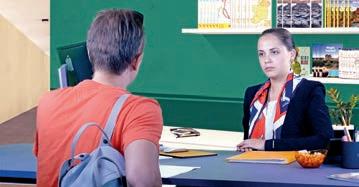
2 Watch this video of a conversation in a tourist information office in Dublin and decide whether these sentences are true (T) or false (F).
1 The traveller has only just arrived in Dublin.
2 He is worried about getting lost.
3 The day trip he is interested in only takes place in the summer.
4 The tourist guide offers him two alternative trips.
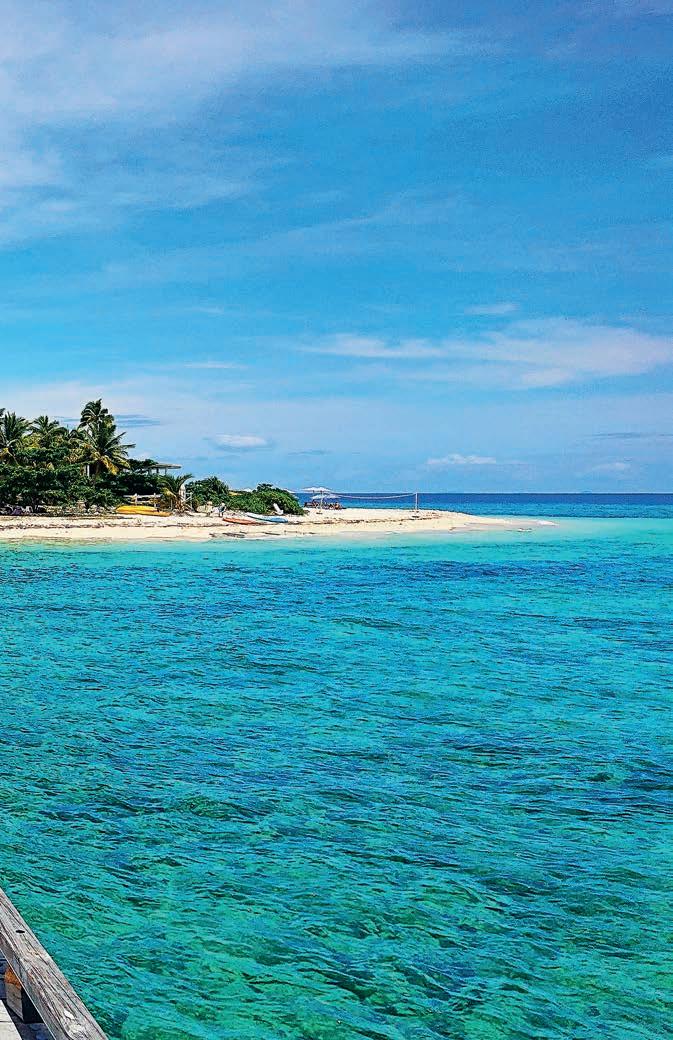
5 She explains how to reach the destination by public transport.
6 The journey will take about 45 minutes.
3 Go online and find out where your nearest Tourist Information Centre is. When is it open and what kind of information can tourists and visitors get there? Make some notes so you can share your findings with the class.
Discipline turistiche e aziendali
• Prodotti turistici a catalogo e a domanda.
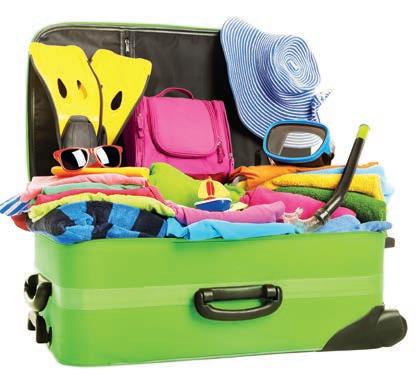
• Strumenti di comunicazione interpersonale nei diversi contesti aziendali.
• Marketing turistico operativo e strategico.
PERCORSI INTERDISCIPLINARI
Diritto e legislazione turistica Compiti e funzioni delle istituzioni locali, nazionali e internazionali nei rapporti con le imprese turistiche.
Geografia turistica
• Evoluzione storica dei viaggi.
• La tradizione del Grand Tour.
• Globalizzazione e sviluppo sostenibile.
9
T F
The jetty at Mala Mala Island, Fiji
READY TO GO
1 When was the last time you travelled out of your town/ city, region or country? Why did you travel?
Do you think you were a tourist on these occasions?
The Tourism Industry theory

What type of tourism are the examples in the opening paragraph?
DOMESTIC TOURISM
The nature of tourism
Going on a week’s holiday to Sardinia with your family? Visiting your relatives for a few days in another city? Going on a school trip to Brighton to study English? Taking part in a two-day medical conference in another country? Flying to New York for the weekend for some shopping? Which of these actions can be classified as those of a tourist? Well, according to UNWTO (the United Nations World Tourism Organization whose objective is the promotion of responsible, sustainable and universally accessible tourism worldwide), all the people doing the above things can be defined as tourists.
A visitor is a traveler taking a trip to a main destination outside his/her usual environment, for less than a year, for any main purpose (business, leisure or other personal purpose) than to be employed. A visitor is classified as a tourist if his/her trip includes an overnight stay, or as a same-day visitor otherwise.
So, in other words, tourism refers to the temporary movement of people to destinations away from where they live or work and, as a consequence, the activities they do and the services they use in these places. Looking at where the journey takes place, we can find the following standard classification.
INTERNATIONAL TOURISM
when the trip or holiday takes place within a person’s country of residence
when the trip or holiday involves another country
outbound tourism
a person travelling out of their country of residence

inbound tourism
a person entering a country which is not their country of residence.
10 1
Then we can consider the motivations for travelling. People travel for many reasons and the most common sub-divisions are:
LEISURE This is what most people think of with the word tourism, and it basically refers to travelling for pleasure and enjoyment, whatever the length of the stay. It includes holidays for recreational activities, sports, or shopping; educational, cultural and religious trips; health and wellness breaks and so on.
BUSINESS People who travel for work-related purposes, for example to conferences, exhibitions, trade fairs and meetings. It is likely that their employer will pay for all or most of the trip, so business travellers may spend more on transport and accommodation.
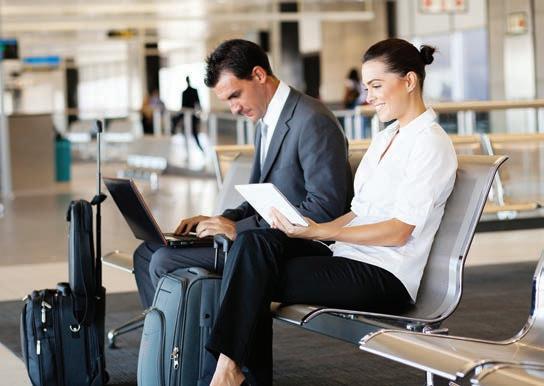
VISITING FRIENDS AND RELATIVES (VFR)
Given that many people migrate to other countries, this form of international travel is extremely common particularly during holiday and festival periods when they return to their home country. Although they probably will not spend on accommodation, VFR tourists are likely to spend on other services and activities, such as transport, food and local attractions.
READING COMPREHENSION
2 Read the texts on pages 10 and 11 and decide whether these statements are true (T) or false (F). Correct the false ones.
1 A person travelling for business cannot be considered a tourist.
2 According to the UNWTO definition, a tourist is someone who spends at least one night in a different destination.
3 An Italian family from Rome who goes on holiday to Sicily is an example of domestic tourism.
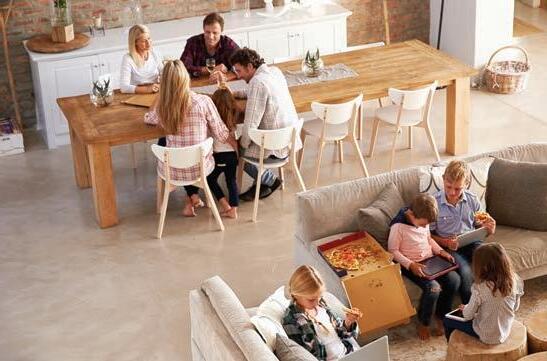
4 A US citizen who goes on holiday to London is an example of outbound tourism for the UK.
5 People who travel for leisure purposes spend more money than those travelling for business.

6 It is unlikely that VFR tourists spend money on accommodation.
3 Complete the mind map on the FLIP BOOK with details from the text.
VOCABULARY
4 Find the English equivalents in the text for these expressions.
1 parenti
2 gita scolastica
3 ambiente
SPEAKING
4 scopo
5 tempo libero
6 piacere, divertimento
5 COMMUNICATION In pairs, talk about what kind of tourism you and your family have been part of.

11
T F
READY TO GO
1 In pairs, discuss how you think tourism has changed over the centuries.
A short history of tourism
The word ‘tourist’ appeared at the end of the 18th century but tourism had existed long before this.
THE ROMANS AND GREEKS travelled in order to expand their empires and to trade, but their wealthy citizens also travelled for educational, cultural and recreational reasons. They visited important historical sites, including the seven wonders of the ancient world; they travelled to take part in sporting or musical competitions; they relaxed in towns and resorts by the sea or at hot springs and thermal baths. The huge road network built by the Romans enabled them to travel with relative ease, but with the decline of the Roman Empire, this network began to deteriorate.
During THE MIDDLE AGES travel was full of dangers, such as bandits and robbers on the roads ready to attack travellers for their money. Despite these risks, and the cost and time involved in undertaking a journey, the Middle Ages and particularly THE RENAISSANCE were periods of great travel. The reasons for these difficult and often dangerous journeys were primarily exploration and trade.
In these periods, people also went on religious pilgrimages to visit holy shrines and needed services like change of transport, food and accommodation during these trips, just like tourists today.

In THE 18TH CENTURY , members of the British aristocracy and upper classes took part in the Grand Tour. This was a tour, lasting anywhere between one and three years, of the most important cities in Europe, especially in France and Italy, although some included Germany, Spain and Greece. It was undertaken by young men, accompanied by a guardian or tutor, and was intended to enrich their culture and complete their education. Later, it also became fashionable for rich young women to tour Europe in a similar way. They were always accompanied by a chaperone, an older lady who had to ensure their safety and protect their physical and moral reputation.
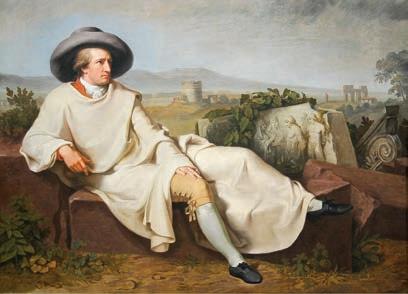
READING COMPREHENSION
2 Read the texts on pages 12 and 13 and answer these questions.
1 Who could be considered to be the first tourists? Why?
2 What were the difficulties of travelling in the Middle Ages?
3 What were the most common reasons for travel in the Middle Ages and Renaissance?
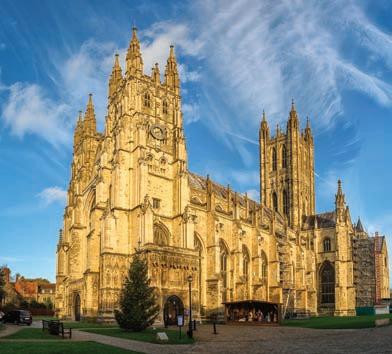
4 Who took part in the Grand Tour? Why do you think it was only for these people?
5 How did developments in transport change the concept of travel and tourism?
6 In the past, how was the question of wealth connected to the possibility of travel? And today?
3 Complete the mind map on the FLIP BOOK with details from the text.
12 theory 1
Artemis Temple, Selçuk, Turkey
Goethe in the Roman countryside
Canterbury Cathedral, England
ease facilità holy shrines santuari
Chaucer
LOOK CLOSER
THE INDUSTRIAL REVOLUTION saw the rise of the affluent, middle classes in England and short breaks for health reasons at spas and seaside towns in Europe became popular. The development of faster and better transport systems – steamships and trains –meant travel became quicker and more accessible to the average person and tourism was reserved less and less for only the wealthy. Travel for leisure purposes began to take hold: for example, in the early 1900s many British families were able to take day trips by train to the seaside from the big cities. With the introduction of paid holidays for workers and, later, the mass ownership of cars, people were able to travel easily and could have a short, cheap holiday by the sea, staying in places like holiday camps or caravan parks which offered simple accommodation, food and entertainment.
Poster produced for London & North Eastern Railway (LNER) to promote rail travel to Bridlington

International travel suddenly became more widespread in THE 1970s with jumbo jets which were able to transport large numbers of people quickly and safely to far-flung parts of the world. People started to have more paid holidays and tour operators were able to offer relatively cheap package holidays to destinations with better weather and more sunshine or to exotic locations, which had been out of the reach of most people until then. The consolidation of international mass tourism – standard products for large numbers of people going to the same destination during the same period – had begun.

VOCABULARY
4 Find the adjective forms in the texts for these nouns.
5 Find the words in the texts for these definitions.
1 : to get worse
2 : something bad that could happen
3 : the buying and selling of goods
4 : an increase
5 : events, performances, activities etc. to amuse people
6 : extensive, common, widely diffused
INTERNET RESEARCH & SPEAKING
Thomas Cook was probably the first tour operator, back in the 19th century. He started by organising day trips by train in England, and then moved on to the rest of the UK. In 1855 he took his first tourists to Belgium, Germany and France. His tours soon expanded to include Switzerland and Italy, and then an eight-month round-the-world trip in 1872. The company he set up with his son later became one of the biggest tour operators in the world. However in 2019 Thomas Cook Group plc went into compulsory liquidation and the name and logo were bought by a Chinese conglomerate which sells flights and hotel packages.
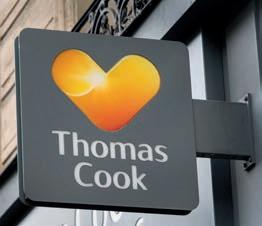
steamships battelli a vapore take hold prendere piede ownership possesso far-flung remote
6 PRESENTING Which Italian cities were usually included in the Grand Tour? Why? Was your town/city part of the tour? Find out and prepare a short oral report on the most popular places in Italy for foreign tourists at that time.
13 The Tourism Industry
1 wealth wealthy 2 education 3 recreation 4 history 5 danger 6 religion 7 fashion 8 access

































































